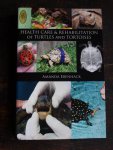Dave, the little "grubby" critter that I popped out of the RR was EXACTLY the same as what's on the video, even down to the triangular shaped (hard to see in the vid, but is noted in other pics as well as descriptions of this organism) "organ" (for evacuation/reproduction?) behind what I took to be its head area. What I read about the gill/body flukes is that you need a microscope to see them. This "grub" was not only highly visible, but it was so large that I couldn't view it at the lowest power on the microscope. But, with the scope, could easily make out its various body parts as it moved around on the slide. And it wasn't "attached." Once the cyst was pricked open, it came out easily with gentle prodding via Q-Tip.
This is called Clinostomum marginatum and is classified as a digenetic trematode. Not the same thing as the skin or gill fluke. What I read about it says it does form into a cyst. It waits in that form, embedded in the skin or muscle, until the fish is eaten by a bird (next stage in its reproduction). The biggest problem with the CM is that in food-fish, the cysts make the meat unappetizing (works for me), though if properly frozen/cooked is harmless for consumption.
As far as the effects on the fish, that depends on the amount of infestation and the location of the cyst. Obviously, one on or near the gills can cause respiratory problems. Too many, and if there are any internally, can weaken the fish, impair its food intake, or lead to secondary infection, etc. I couldn't find much info on long-term effects, as the fish that were studied didn't die due to the presence of the CM. Most of the time, the CM will tend to embed either on or near the gills, or at the base of the dorsal or caudal fins.
There apparently is no treatment other than stopping the life-cycle by eliminating the snails. The main vector-host is the "ramshorn snail," but though I couldn't find for sure, there are probably other snails as well. And I actually do have a few of those fellas in the pond, not on purpose, though -- but they're going bye-bye now, as I catch them. There are lots of articles regarding studies done on the [distribution and economic effects of the] CM, and some studies regarding snail control. In general, control of the bird-host stage is almost impossible, 'cause even with physical deterrents to keep the birds from getting the fish, you're still going to have bird poop present (fecal fly-overs).
Not saying there isn't something ELSE going on, but am saying that in this particular case, this critter was a "yellow grub."



